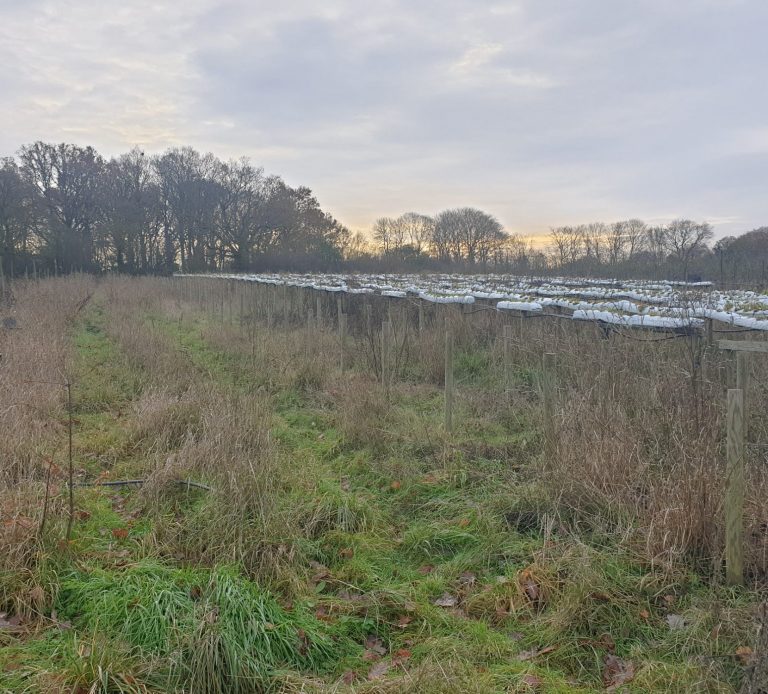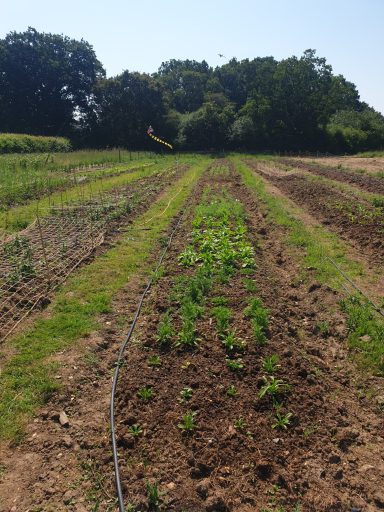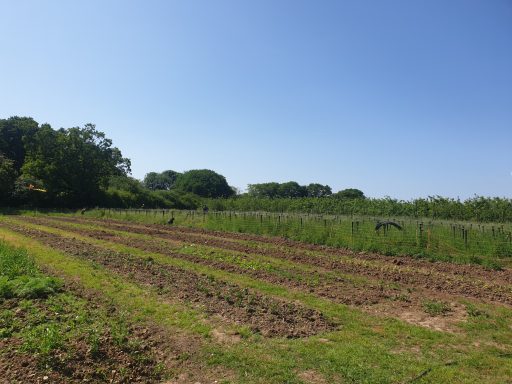Our story

Where it started
It all started with a Farmers Weekly magazine in March 2022. There was an article about pick your own flowers. It was an easy decision to make, with Kimberley having a passion for horticulture and Christopher working in agriculture.
For many years this area of the farm has been out of use, for one reason or another, and its longed to be returned to production.
We were in the fortunate position to have some machinery and infrastructure in place on the farm to bring our plan to fruition, though we were without a polytunnel to actually have somewhere to grow and had a reluctance to rely on direct sowing. But, as the saying goes, farming is a gamble, so we gave it a trial run.
To begin with, we decided to grow a mix of sunflowers. Filled with excitement and anticipation the little seeds were sown on our patch. We were delighted when the area was a sea of green seedlings but little did we know this was indeed fat hen! The sunflowers did eventually grow but what a season it was. The summer was the driest and hottest on record and this affected our crop immensely.
When the flowers were in bloom we shared these with friends and family, and were fortunate enough to provide a selection to St Marys Church, Polstead, our local village church, for their harvest festival display - that's how bad the weather affected the growing season with such late blooming!
Taking the next steps
We decided to be bold and purchased our polytunnel in November 2022. It arrived in December and was like an early Christmas present. That is where the fun began.
One thing we learnt very quickly is to never underestimate how long things will take. The polytunnel took multiple weekends to assemble, with many a day spent in the pouring rain and trudging through mud. When the last piece was needed - the cover, the weather still wasn't on our side and the wind decided to pick up, which delayed completion. Needless to say memories were made throughout this time and the polytunnel was eventually finished by mid-January 2023.
Then came the next hurdle, what to grow and how much. After many hours of researching the internet, reading books and attending workshop we finally decided what we will grow for our customers.


Sowing the first seeds
Armed with our packets of seeds and cell trays we begun sowing the first our hardy annuals in January 2022.
Before deciding how many seeds to sow, many hours were spent calculating the length and width of the beds and how these would be arranged. We decided to grow each variety in a 1m by 3m. There will be successional sowing to ensure the flowers extend their length in the season. Next, we had to work out what our spacings would be between the plants to calculate the final sowing numbers.
One thing we have learnt very early is don't expect 100% germination rate from the seeds. Its always better to sow some extra seeds then to be wholly exact with numbers. If more than the required amount of seeds germinate they can be squeezed into the planting beds.
We will have annuals for our first year including some of the following; cornflower, ammi, larkspur, cosmos, snapdragons, phacelia, nigella, statice, zinnia, sunflowers, sweet peas, and helichrysum. These will be complemented by some foliage including bunny tail grass, briza grass and bupleurum.
Finally, we have chosen several varieties of dahlias and a colourful selection of gladioli.
Spring 2023
Spring saw us busily pulling out more flower beds, fencing off the patch and planning where we were going to plant.
We started planting out the first of our annuals into their beds and realised how quickly the beds filled up. We also begun sowing our more tender annuals such as zinnias and sunflowers.

How the flower field evolved
© Copyright. All rights reserved.
We need your consent to load the translations
We use a third-party service to translate the website content that may collect data about your activity. Please review the details and accept the service to view the translations.











